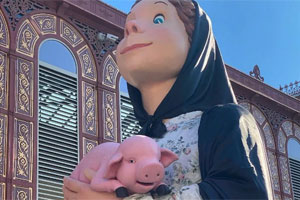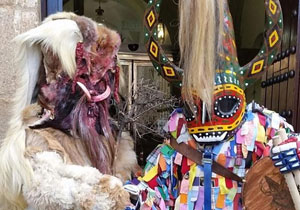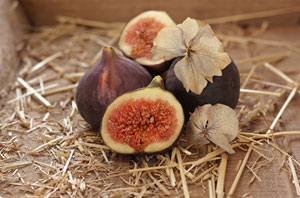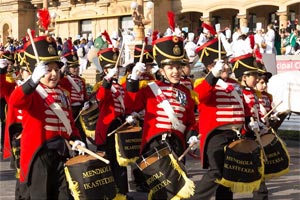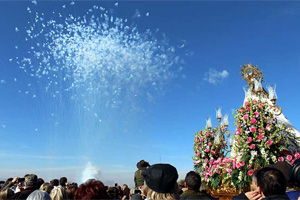Pilgrimage of the Holy Face
What is the Pilgrimage of the Holy Face?
The Pilgrimage of the Holy Face is a religious celebration that takes place in the city of Alicante, Spain. It is a tradition that dates back to the 15th century and is celebrated on the second Thursday after Easter.
The celebration centers around the relic of the Holy Face, which according to tradition, is the cloth with which Veronica wiped the face of Jesus on his way to Calvary. The relic is located in the monastery of the Holy Face, located on the mountain of the same name, about 5 km from the city of Alicante.
The pilgrimage begins the night before, with the so-called "torchlight procession", in which pilgrims walk from the Cathedral of San Nicolas de Bari in Alicante to the monastery of the Holy Face, carrying lit torches and singing religious songs.
On the morning of the second Thursday after Easter, the "Pilgrimage Mass" is celebrated, in which thousands of people participate, including civil and religious authorities. After the Mass, the procession of the relic of the Holy Face takes place, which is carried in a golden reliquary on the shoulders of the pilgrims.
The procession travels the five kilometers that separate the monastery of the Holy Face from the city of Alicante, passing through streets adorned for the occasion. Thousands of people, including pilgrims and spectators, participate in the procession, and a great atmosphere of devotion and religious fervor is experienced.
The Pilgrimage of the Holy Face is considered one of the most important religious manifestations in the Spanish Levante and attracts thousands of people every year, both locals and tourists. The celebration was declared an International Tourist Interest in 2011 and is part of the cultural and religious heritage of the region.
Some Curiosities
- It is said that the relic of the Holy Face arrived in Alicante in the 15th century thanks to a priest named Fray Pedro Mena, who brought it from Rome.
- The monastery of the Holy Face was built in the 17th century on the ruins of an ancient hermitage and is one of the main pilgrimage sites in the province of Alicante.
- During the torchlight procession, pilgrims walk barefoot or with sandals to symbolize humility and penance.
- The relic of the Holy Face is carried in procession by men who have been selected for this task and who must meet certain requirements, such as having good conduct and leading an exemplary Christian life.
- The procession of the Holy Face is one of the few in the world that is carried out with an authentic relic, that is, with an object that is considered to have a direct relationship with the figure of Jesus Christ.
- During the procession, pilgrims usually bring offerings and flowers to deposit at the relic of the Holy Face.
Origin and History
The history of the Pilgrimage of the Holy Face dates back to the fifteenth century. According to tradition, the relic of the Holy Face arrived in Alicante in 1489, thanks to a priest named Fray Pedro Mena, who brought it from Rome. At that time, the relic was the property of the Spanish cardinal Pedro González de Mendoza, who gave it to the monastery of the Holy Face of Alicante.
Since then, the relic of the Holy Face became an object of veneration and the pilgrimage in its honor began to be celebrated. The first pilgrimage was carried out in 1489, when a group of faithful walked from the city of Alicante to the monastery of the Holy Face to venerate the relic.
Over the years, the pilgrimage gained importance and became one of the main religious celebrations in the province of Alicante. During the Spanish Civil War, the pilgrimage was suspended and the relic of the Holy Face was moved to Valencia to protect it from bombings. After the war, the pilgrimage resumed and became a manifestation of the unity and faith of the people of Alicante.
Today, the Pilgrimage of the Holy Face is considered one of the most important celebrations in the province of Alicante and attracts thousands of faithful and tourists from around the world every year. The pilgrimage and veneration of the relic of the Holy Face are part of the cultural and religious heritage of the region.
What to See in Alicante
Alicante is a Spanish city located on the Mediterranean coast, known for its beaches, warm climate, and rich culture and history. Here are some recommendations on what to see in Alicante:
- Castle of Santa Barbara: It is one of the most emblematic monuments of Alicante and offers impressive views of the city and the Mediterranean coast. The castle is located at the top of Mount Benacantil and can be reached by elevator or on foot.
- Explanada de España: It is one of the most beautiful avenues and is located in the center of Alicante. The esplanade is made up of six million ceramic tiles and has palm trees and terrace bars and restaurants.
- Santa Cruz neighborhood: It is one of the oldest and most picturesque neighborhoods in Alicante. Its narrow and steep streets are full of colorful houses and climbing plants, and it is a perfect place to get lost and discover charming corners.
- Basilica of Santa Maria: It is one of the most important churches in Alicante and is located in the heart of the old town. The basilica has an impressive Baroque bell tower and its interior houses a large number of works of art.
- Archaeological Museum of Alicante (MARQ): It is a modern and very interesting museum that houses a wide collection of archaeological artifacts dating from prehistory to modern times.
- Central Market of Alicante: It is a traditional food market where you can find a wide variety of fresh and local products, from fruits and vegetables to fish and meat. In addition, it has several bars and restaurants where you can enjoy Alicante cuisine.
- Postiguet Beach: It is the most central beach in Alicante and is very popular among tourists and locals. The beach has amenities such as showers, hammocks, and umbrellas, as well as bars and restaurants where you can have a drink or eat something fresh and delicious.
These are just some of the many things to see and do in Alicante. The city offers a wide range of options for all tastes and budgets, from monuments and museums to beaches and outdoor activities.
Crafts and recommended shopping
Alicante has a wide variety of artisanal products and shopping places that you can visit during your stay in the city. Here are some recommendations on crafts and shopping in Alicante:
- Espartero: Espartero is a natural fiber used to make a wide variety of objects such as rugs, baskets, hats, etc. In the area of Alicante, especially in the town of Elche, you will find a wide variety of artisanal products made with esparto.
- Ceramics: Ceramics are another popular handicraft in Alicante. In the city and its surroundings, you will find several shops and workshops selling traditional and modern ceramics such as plates, vases, cups, etc.
- Leather: The city of Elda, located about 30 minutes by car from Alicante, is known for its tradition in the production of footwear and leather goods. There you will find a wide variety of shops and factories selling shoes, bags, belts, and other leather products.
- Flea markets: Several flea markets and street markets are held in Alicante where you can find vintage items, antiques, books, records, and other curious objects.
- Central Market of Alicante: In addition to fresh products, the Central Market of Alicante has several stalls selling artisanal products such as olives, sausages, cheeses, sweets, wines, and liquors.
- Outlet of major fashion brands: In the city of Elche, you can find The Outlet Stores Alicante shopping center, where you can find great discounts on clothing, shoes, and accessories from major fashion brands.
These are just some of the options that Alicante offers in terms of crafts and shopping. The city and its surroundings offer a wide variety of options for all tastes and budgets.
What to eat in Alicante
Alicante's cuisine is very varied and rich, based on Mediterranean gastronomic culture. It has a large number of local dishes and products, and here are some recommendations on what to eat in Alicante:
- Arroz a banda: It is one of the most typical dishes of Alicante's gastronomy. It is rice cooked with fish broth and alioli, and usually served with pieces of fish and seafood.
- Caldero: Another typical rice dish from the coastal area of Alicante, especially from the Vega Baja area. It is rice cooked with fish broth, garlic, and ñora, and usually served with alioli and pieces of fish.
- Cocido con pelotas: It is a traditional stew from the Marina Alta area, made with meat, meatballs, potatoes, vegetables, and spices.
- Denia red prawns: They are highly valued in Alicante's gastronomy. These prawns have a unique flavor and texture and are usually served grilled or boiled.
- Turrón: It is one of the most famous products in the Alicante area. Turrón is a sweet made with almonds, honey, and sugar, and comes in two varieties: hard turrón and soft turrón.
- Fartons: They are elongated and soft buns typical of the Valencia and Alicante areas. They are usually eaten soaked in horchata, a drink made from chufas.
- Alicante wine: The Alicante area has several wineries and high-quality wines, such as Fondillón, a sweet red wine aged in oak barrels.
The food in Alicante is delicious and varied, so do not hesitate to try the different local dishes and products during your visit to the city.

